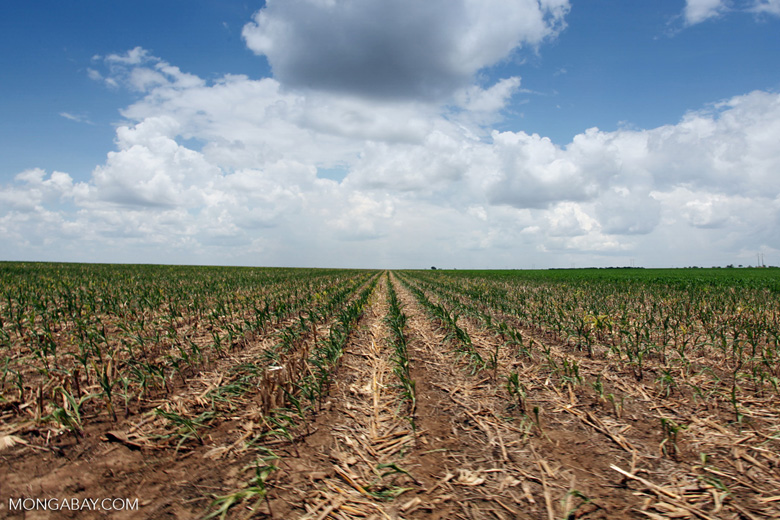- Crops for livestock feed damage ecosystems and threaten wildlife, says WWF UK.
- The conservation NGO estimates that just the UK’s livestock industry has caused the extinction of 33 species worldwide.
- However, if people lower their protein intake to recommended amounts, farmers would need 13 percent less land to produce feed for livestock and farmed fish, saving an area 1.5 times the size of the EU.
The conservation NGO WWF UK is calling on consumers to cut back the amount of meat they eat. Land used to produce feed crops for livestock and farmed fish threatens biodiversity and delicate ecosystems, the organization argues in a new report released Oct. 3.
“The world is consuming more animal protein than it needs and this is having a devastating effect on wildlife,” Duncan Williamson, a food policy manager at WWF, told the Guardian. “We know a lot of people are aware that a meat-based diet has an impact on water and land, as well as causing greenhouse gas emissions, but few know the biggest issue of all comes from the crop-based feed the animals eat.”
With its conclusions centering primarily on the UK and Europe, the publication’s authors report that the UK’s livestock industry is responsible for driving perhaps 33 species to extinction, as the need for land to grow food to feed chickens, pigs and fish puts pressure on the animals that once called those areas home.

“Feed crops threaten the biodiversity of many of Earth’s most valuable and vulnerable areas,” WWF UK writes, including the Amazon, the Congo Basin, South America’s Cerrado and Asia’s Mekong.
Farmers have ratcheted up soybean production in recent years, and if the trending increase in demand for meat, and by extension livestock feed, continues, they’ll have to produce almost 80 percent more than 2010 levels by 2050.

Poultry production has jumped from 15 percent of global meat production in the 1960s to 32 percent in 2012. As a result, much of that feed — 41.5 percent across Asia, Europe and the United States — is headed for the mouths of hungry birds. Pigs also take a sizeable share at 30 percent of the world’s feed. And fish farming, on the rise as wild stocks struggle to cope with consumer demand, needs another 4 percent.
WWF UK proposes several alternatives to land-hogging feed cropping to provide sustenance to growing flocks, herds and schools of animals destined for the dinner table. Insects could supplement animal feed, as they pack about the same amount of growth-inducing protein as soybeans. Raising them doesn’t emit as much carbon as farming, and they don’t require as much land to produce. Algae, too, could be an alternative livestock food source on a large scale in the future, with the benefits that it can make its own food with few inputs other than nutrients and carbon dioxide.
These potential solutions, however, don’t address the uptick in demand for animal-based protein. Each of us eats on average 25 kilograms (55 pounds) of chicken every year, and our annual fish take is 19.7 kilograms (43 pounds) per person — nearly twice what it was in the 1960s. But WWF UK says we don’t need that much meat.
British health guidelines figure that the average person needs a maximum of 55 grams of protein per day, and yet Britons consume 64 to 88 grams, one-third of which comes from meat.
By notching that intake down to the recommended levels, farmers would need 13 percent less land to produce livestock feed. That translates to an area 50 percent larger than the EU — 650 million hectares (2.5 million square miles) — that could remain undisturbed by agriculture.

FEEDBACK: Use this form to send a message to the author of this post. If you want to post a public comment, you can do that at the bottom of the page.
